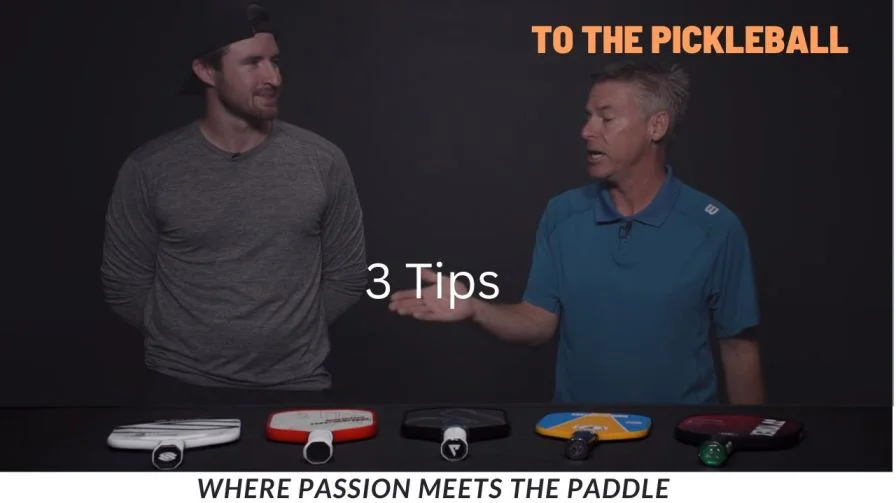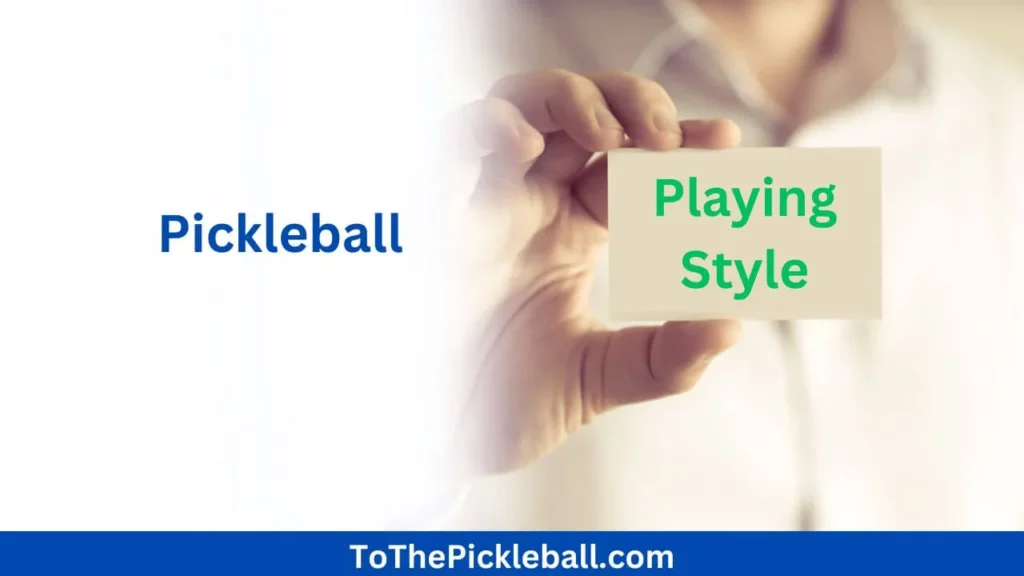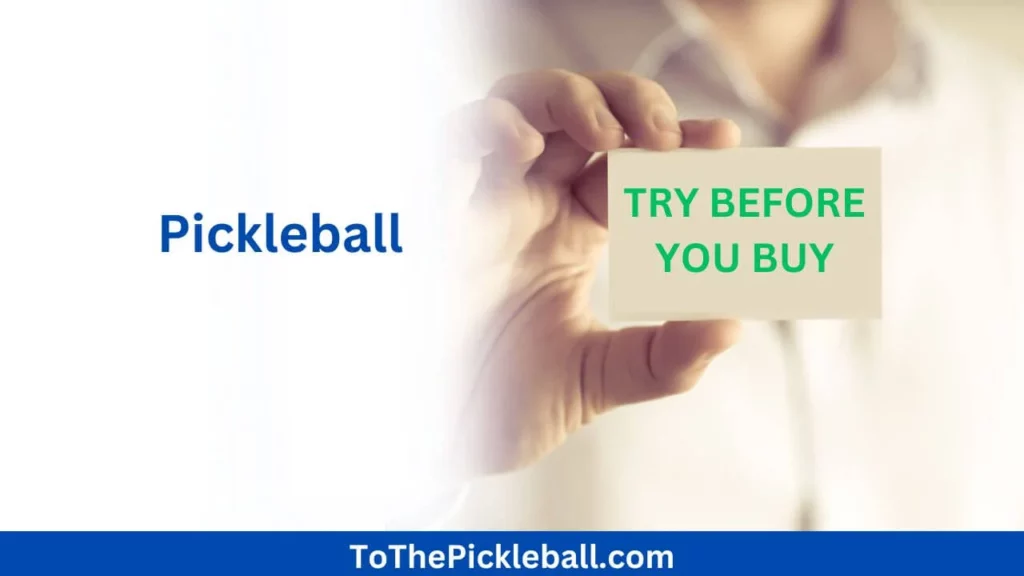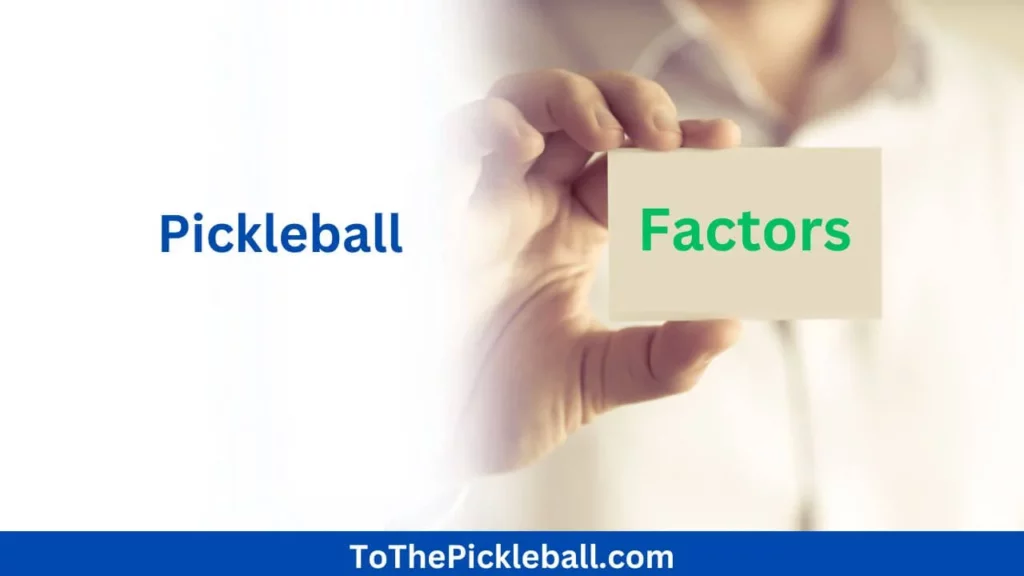

Step 1. Consider Your Playing Style


The first step in finding the perfect pickleball paddle is to consider your playing style. Do you prefer to play a fast-paced, aggressive game with lots of power, or do you prefer to play a slower, more controlled game with an emphasis on finesse? The answer to this question will help you determine the type of paddle you need, such as a paddle with a larger sweet spot for power players or a paddle with a smaller sweet spot for finesse players.
Step 2. Try Before You Buy


Before you make a purchase, it’s important to try out different pickleball paddles to see which one feels the most comfortable and natural in your hand. Most sporting goods stores and pickleball clubs will have paddles available for you to try out, and many retailers also offer demo programs that allow you to test out paddles before you buy them.
Step 3. Factors to consider


When it comes to pickleball, having the right equipment is crucial for success on the court. And one of the most important pieces of equipment is the paddle. With so many options available, choosing the right pickleball paddle can be overwhelming. However, by considering a few key factors such as weight, grip size, shape, material, and core, you can narrow down your options and find the perfect paddle for your playing style and skill level. In this guide, we’ll explore each of these factors in detail to help you make an informed decision when buying a pickleball paddle.
Interested in becoming a pro? Read this guide on mastering pickleball for everything you need to know.
Consider the Paddle’s Weight and Materials
The weight and materials of a pickleball paddle can have a big impact on your game. Generally, a lighter paddle will be easier to maneuver and offer more control, while a heavier paddle will provide more power. Additionally, different materials, such as graphite and fiberglass, can affect the paddle’s stiffness and durability. Consider your personal preferences and playing style when choosing a paddle’s weight and materials.
PICKLEBALL PADDLE WEIGHT RANGES
| Paddle Weight | Description |
| 6-7.5 oz | Ultra-lightweight paddle, ideal for players who prioritize speed and maneuverability. |
| 7.6-8.5 oz | Lightweight paddle, suitable for players who value both control and power. |
| 8.6-9.5 oz | Medium weight paddle, provides a balance of power, control, and maneuverability. |
| 9.6-10.5 oz | Mid-heavyweight paddle, offers more power and stability, but may be more tiring to use for extended periods. |
| 10.6-12 oz | Heavyweight paddle, provides the most power but may be difficult to maneuver. Ideal for experienced players who can handle the weight. |
| 12.1-14 oz | Extra-heavyweight paddle, generally not recommended for most players as it can be too heavy to use comfortably for an extended period. |
| What is “oz”? | “Oz” stands for ounces, the unit of measurement used for pickleball paddle weight, typically ranging from 6 to 14 ounces. |
What is “oz”?
“Oz” stands for ounches, the unit of measurement used for pickleball paddle weight, typically ranging from 6 to 14 ounches.
Grip and SHAPE
The grip of a pickleball paddle refers to the circumference of the handle. It’s important to choose a grip size that feels comfortable in your hand and allows you to maintain a relaxed grip throughout the game. If the grip is too small, your hand may cramp and you may not have enough control over the paddle. On the other hand, if the grip is too large, it can be difficult to control the paddle and may lead to errors. It’s important to try out different grip sizes to find the one that works best for you.
The shape of a pickleball paddle can vary from a traditional oval shape to a more modern teardrop or rectangular shape. The shape can affect the balance of the paddle and the sweet spot, or the area of the paddle that provides the most power and control. The traditional oval shape is a good all-around shape that provides a balanced feel and a large sweet spot. The teardrop shape is designed to provide more power and is great for players who like to hit hard shots. The rectangular shape is designed for players who want more control over their shots and is great for players who like to play with finesse. It’s important to choose a shape that fits your style of play and helps you perform at your best.
Uncovering the Top Materials for Pickleball Paddle Cores
When it comes to choosing a pickleball paddle, the core material plays a vital role in the overall performance of the paddle. The core of a pickleball paddle is the inner layer that provides the paddle’s structure and determines its stiffness. Therefore, it’s essential to understand the different materials used in the core and how they can affect your gameplay.
1. Polymer Core
Polymer cores are the most common type of core material used in pickleball paddles. They are made of lightweight plastic materials and offer a great balance of power and control. Polymer cores are known for providing excellent vibration dampening, which can reduce the strain on your arms and elbows. They are also durable and can withstand intense gameplay.
2. Aluminum Core
Aluminum cores are another popular option for pickleball paddle cores. They are made of a solid aluminum material, which provides excellent power and pop. Aluminum cores are heavier than polymer cores, which can provide more stability and control during gameplay. However, they can be more rigid and may not offer as much forgiveness as other core materials.
3. Nomex Core
Nomex cores are made of honeycomb-shaped aramid fibers, which provide excellent shock absorption and durability. They are known for providing a softer feel, which can help players who suffer from elbow pain. Nomex cores offer great control and accuracy, making them a popular choice for players who prioritize precision over power.
4. Polypropylene Core
Polypropylene cores are lightweight and offer great control and maneuverability. They are made of a plastic material and provide a softer feel than aluminum cores. Polypropylene cores are known for providing excellent vibration dampening, which can reduce the risk of injury and fatigue during gameplay.
5. PVC Core
PVC cores are a newer option in the world of pickleball paddle cores. They are made of a lightweight plastic material and provide great control and accuracy. PVC cores are known for their softer feel and excellent vibration dampening, making them a popular choice for players who suffer from elbow pain.
Note:
The core material of a pickleball paddle plays a crucial role in its performance. The best core material for you will depend on your playing style and personal preferences. By understanding the different materials used in the core and their benefits, you can choose the right pickleball paddle to enhance your gameplay.
Summary
The article discusses how to choose the perfect pickleball paddle based on your playing style, grip size, weight, shape, and core materials. The author suggests trying different paddles before purchasing and understanding the impact of weight and materials on your game. They also provide a guide on paddle weight ranges, grip and shape, and the top materials for pickleball paddle cores.






